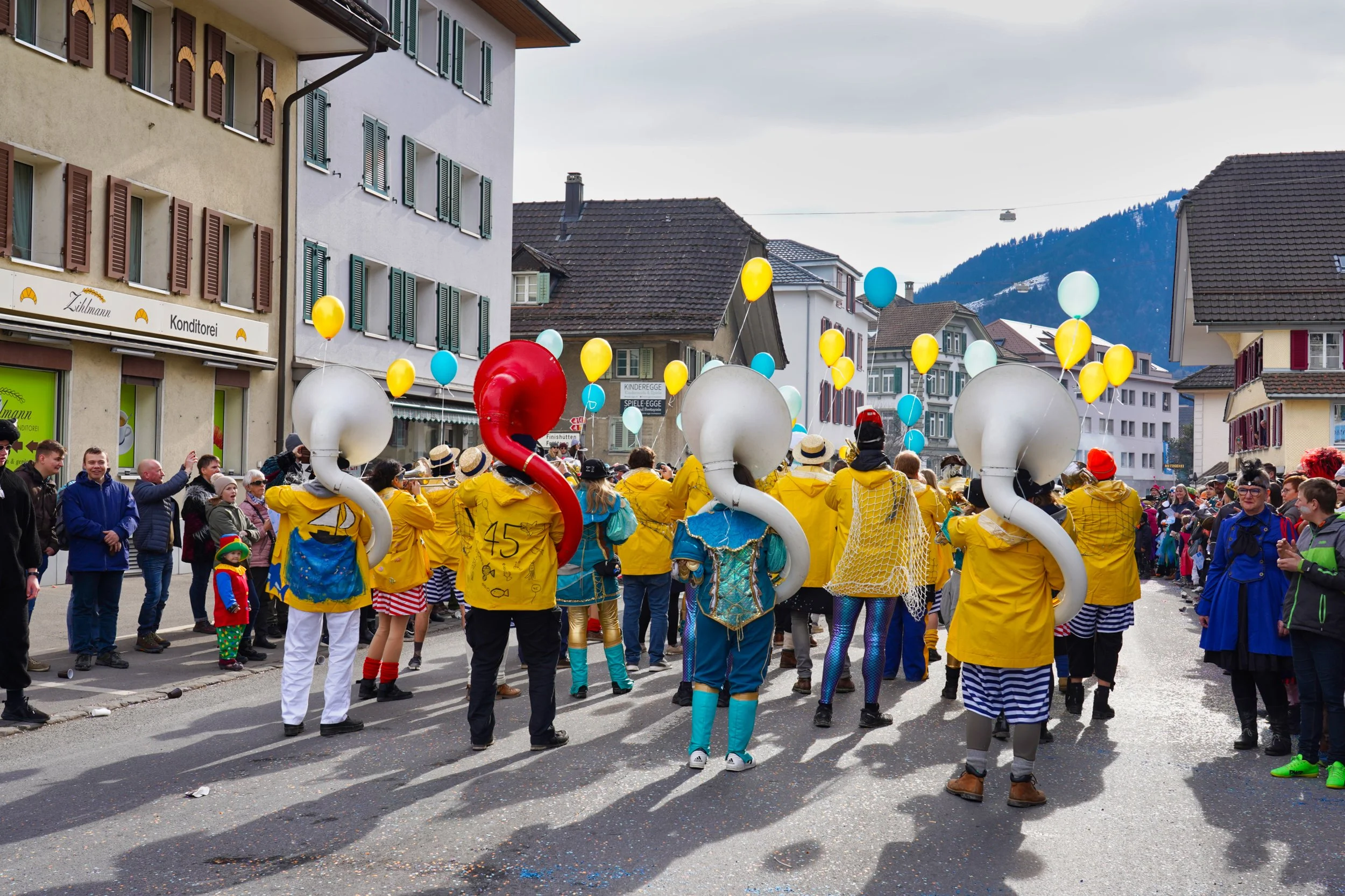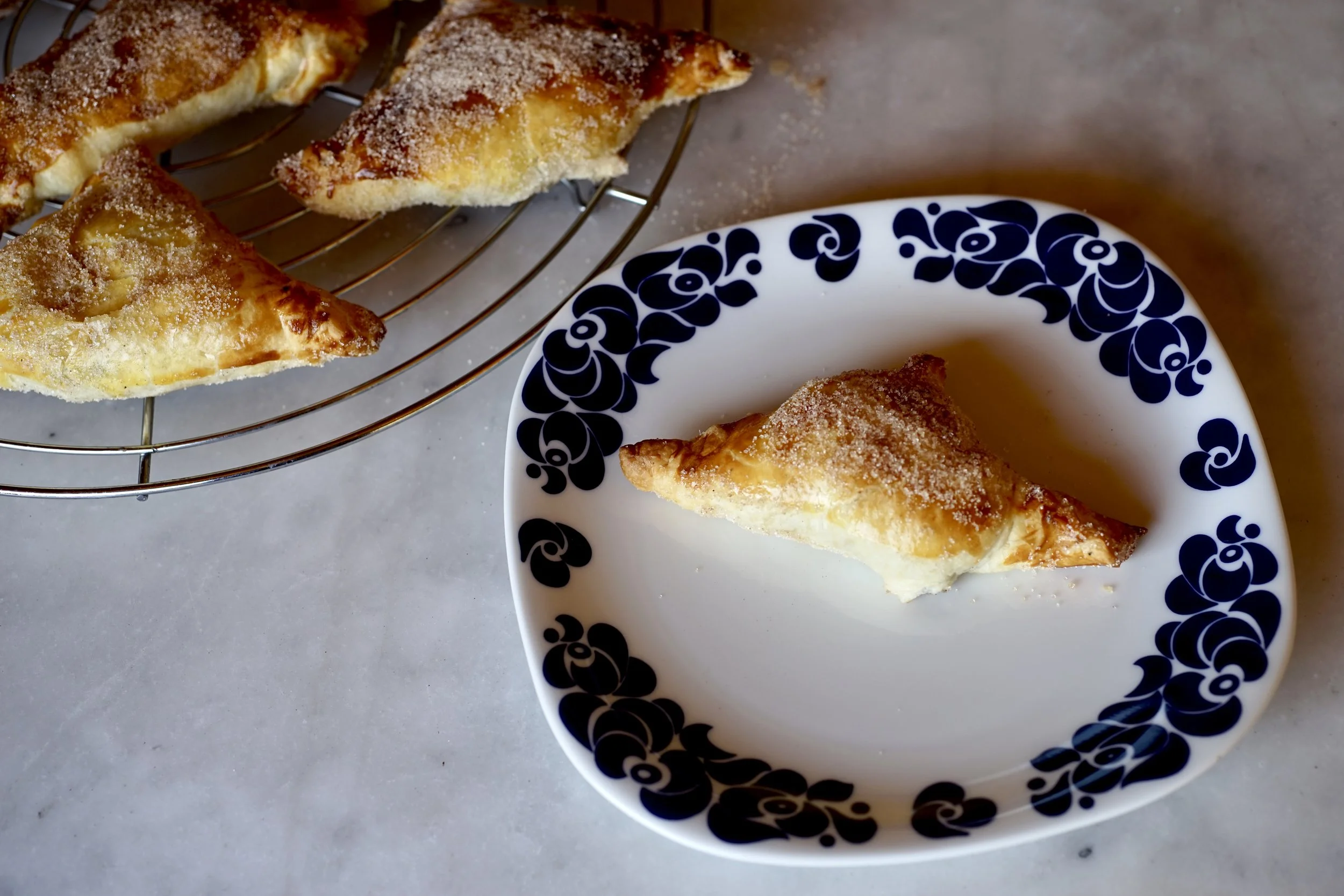Fastenwähe
We are deep in the Fasnacht season with Luzern's celebrations a week behind us, the Bernese party starting on Wednesday, and the biggest, in Basel, following suit next Monday.
This time of year brings numerous seasonal food items, Fasnachtschüechli, onion and cheese tarts, Basler Mehlsuppe (recipe here) and the ubiquitous Fastenwähe. Though not exclusively linked with Fasnacht celebrations, these luscious little breads, typically sprinkled with caraway seeds, have always been associated with Fastenzeit, Lent.
Today the season for Fastenwähe lasts from Dreikönigstag on January 6 to Easter Sunday. According to the Kulinarisches Erbe, bakeries in Basel produce between 50,000 and 60,000 of these little breads during this time.
The first record of the Fastenwähe is four and a half centuries old, as it was mentioned in the city documents of Rheinfelden in 1554. Due to its high proportion of butter and white flour, it was seen as something of a luxury good and in the 18th century bakers had until Christmas to decide if they would produce either Fastenwähe or plain Ankeweggli, butter rolls, during the Lenten season. They were not allowed to produce both.
Today, Fastenwähe are produced not only in Basel, but all over Switzerland, and you can even buy a special tool to cut out their signature holes—though a paring knife works just as well.
Recipes for this bread abound, other examples include this Betty Bossi recipe, or this one, from Basler Küche.
425 g flour
300 ml milk, room temperature
20 g fresh yeast (or 7 g dried)
1 tbsp salt
125 g butter, room temperature
1 egg yolk
caraway seeds to garnish
First, weigh out the flour into the bowl you will use for mixing.
In a large measuring cup, measure out 150 ml of the milk, the yeast, and about 5 generous tablespoons from your measured bowl of flour. Mix together well, then cover and leave in a warm place until it has doubled in size, 30-45 minutes.
Put the yeast mixture into the bowl with the rest of the flour and add the remaining milk, and salt. Use a mixer, or by hand, knead until it comes together. Now add the butter a little at a time. It will make the dough slick and greasy, but should eventually mix in. Knead this until you have a soft, smooth dough. Cover and let rest for about an hour.
When you are ready to bake:
Preheat oven to 200 C / 400 F / gas mark 6
Turn out the dough onto the counter and gently press the air out of it. Separate into twelve balls and let rest about 10 minutes.
Press the balls down to make discs, then use a very sharp knife to cut four holes into each disc. Use your fingers to widen the holes and stretch out the discs.
Place on a parchment lined baking tray and brush with the egg yolk. Sprinkle with caraway seeds, the bake for about 25-30 minutes or until golden.
Caraway seeds are the typical topping, but you can also make these plain, or sprinkled with kosher salt.
If you like a crispier crust, omit the egg wash and brush with milk instead.

















